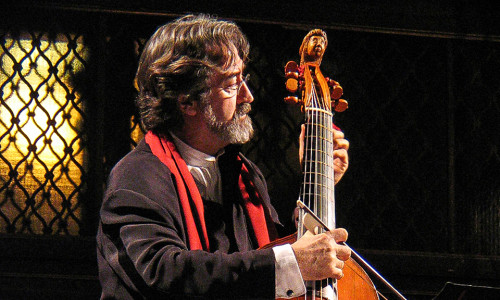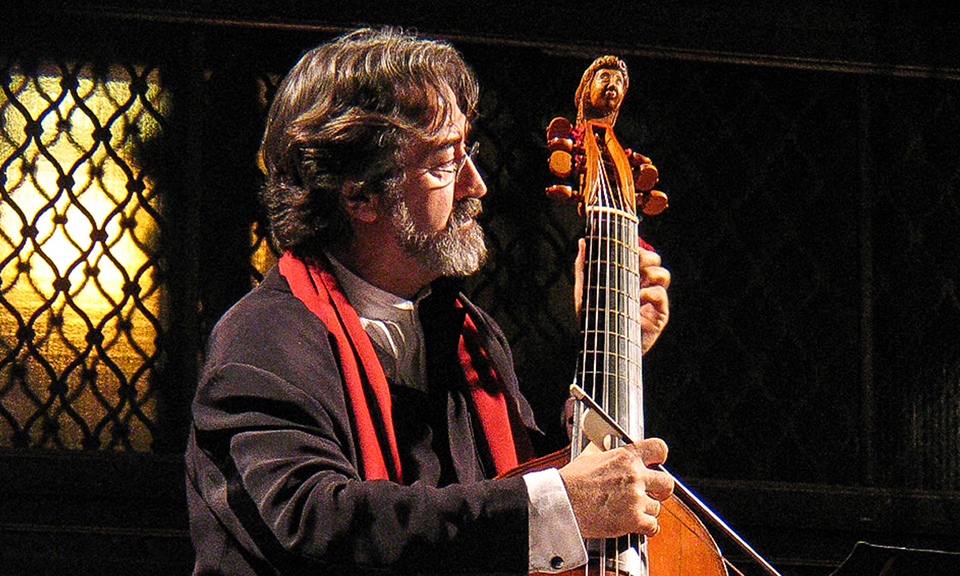 Switzerland Bach: Le Concert des Nations (Pierre Hantaï [harpsichord], Marc Hantaï [flute], Manfredo Kraemer [violin], David Plantier [violin], Balázs Máté [cello], Xavier Puertas [violone], Jordi Savall [conductor, alto and bass viole da gamba]), Tonhalle Maag, Zurich, 16.9.2018. (CCr)
Switzerland Bach: Le Concert des Nations (Pierre Hantaï [harpsichord], Marc Hantaï [flute], Manfredo Kraemer [violin], David Plantier [violin], Balázs Máté [cello], Xavier Puertas [violone], Jordi Savall [conductor, alto and bass viole da gamba]), Tonhalle Maag, Zurich, 16.9.2018. (CCr)

Bach – Musikalisches Opfer, BWV 1079
In the next argument you have as a fervent devotee of Bach with someone who unjustly slanders his music as laborious, contrived, or just plain tiring, it might not be smart to use his late Musical Offering (1747) as a defence against such accusations. What we hear in this work some 250 years later is probably much less tied to the Baroque ‘theory of the affects’ – that music could and should evoke in us a sense of admiration, love, hate, desire, joy or sorrow – and likely aligns more with Hindemith’s proposal of a ludus tonalis, a game of sound: abstract, highly formal and intricate, cerebral. This 72-minute cycle of canons and fugues runs around a central, 21-note theme that is only slightly less surly than that of Beethoven in his ‘Große Fuge’. If it gets stuck in your head, that’s likely more a result of its omnipresence than its charm.
Hearing this piece in Zurich’s large-but-not-massive, temporary Tonhalle, played by Jordi Savall and his Concert des Nations, it was primarily its abstraction that came through, at the cost of much intimacy but with one real advantage: showcasing an ensemble’s undying reverence for its form, its intricacy. That’s one defence, but not the only one, against Bach detractors – yes it is all about form sometimes, yes that’s the point sometimes, and precisely that makes it so godly and good. Sometimes.
That’s not to say it makes for a charmless hour of music, nor that it was played without affection, but instead that the charm of the thing (that which would indicate literal enchantment) took a back seat, in this performance, to a most excellent structuralism. In other settings, including in other performances from Savall, the balance between those two poles would be closer to the centre.
The ‘Offering’ is less to Christ than to Frederick the Great of Prussia, though who’s to say whether Bach was being playfully ambiguous with the title word of Opfer. The intent of its central, six-voice fugue would seem to be both to impress the court and further cohere Bach’s legacy, but it may well have instead annoyed the king; its flute parts that His Majesty might himself have wanted to play are in strange keys with knotty fingering. Bach may have yielded a set of music for no audience but himself. Not only does it not embrace any elements of the galant style his own son was employing at the time in Frederick’s court, but it goes even more deeply into the past, using the rusty Renaissance term ‘ricercar’ for the grandest of the fugues (first played solely by the harpsichord), complex enough that Webern gave each of its six motives to a different section of the orchestra when he arranged it in 1935. I find irresistible the idea that Bach would take the initiative to commission his own glorification of the king, in a manner that suits his own tastes alone.
But back to the panel of seven mostly unsmiling men arranged before us in 2018. The sight of Pierre Hantaï giving his decorous all to the harpsichord could on occasion provide more pathos than the music itself. Hearing Marc Hantaï’s wooden period flute was like hearing a songbird express the piety of a monk; it was like watching a ballerina do the work of a mason. So small, so pure, not quiet but wise and clear, and all the while so modestly lugubrious. That the piece has a four-movement sonata in the middle of its otherwise endless fugal permutations was an aching moment of life overcoming patterns. How extraordinary to hear those same 21 notes removed from canons and counterpoint and given to us in the sonata with such fresh intensity.
Jordi Savall altered the order of the individual segments, putting the canons in strange intervals and bringing said sonata to the centre; other performances would end with the sonata and put the ‘Ricercar’ in the middle. More than the big room, more than the antique smallness of the instruments, it was this odd concatenation that made the work as a whole sound abstract, and made the evening feel academic.
From left to right, the performers gave a line of music that was blended and astute without looking at each other often or betraying much more than their focus on component parts. Only cellist Balázs Máté appeared to be enjoying the music himself in the first hour, before the cumulative power of the ensemble version of the ‘Ricercar a 6’ finally swept all players in. His quietly busy cello buoyed every minute of the thing, a tight-wire act of play and humility. Savall himself solicited, albeit less brightly, a similar balance of sound from his magnificent bass viola da gamba, an instrument that can be a guitar in a bathtub or a fiddle in a snuff box. It was no small joy to suss out his minutely excellent playing within the tapestry.
Encore, encore, the pennywise Swiss audience demanded, and got, via its stubborn clapping. First the ‘Badinerie’ from Bach’s Orchestral Suite No.2, where the ensemble seemed positively relieved to abandon the formalism of the ‘Musical Offering’ and simply rock out. Marc Hantaï’s flute was wizardly. Second was an excerpt from music Savall must have researched as a professor in Basel and which he recorded with his orchestra in 1997: unattributed, proto-Baroque French court music from 1627 honouring Louis XIII. The passage had such fun string music and such free viola da gamba playing that one marvelled at the gnarly resonance of the era. Further stubborn clapping led to a third encore from Marais’ Alcyone, an opera from 1706: a march ‘pour les Matelots’. Simple and splay, the martial music allowed the ensemble a final chance to delight with its artistry.
Casey Creel
